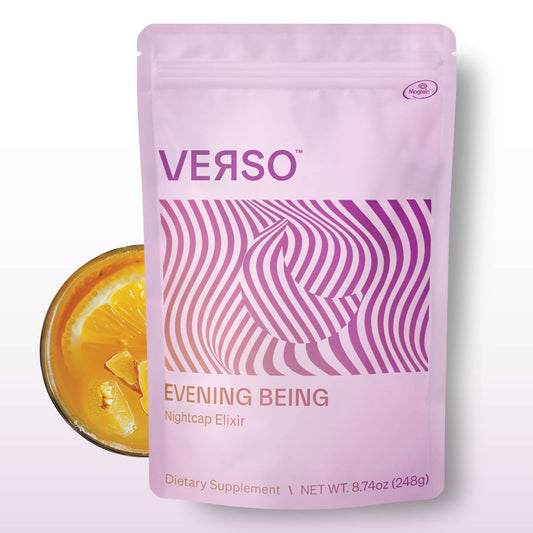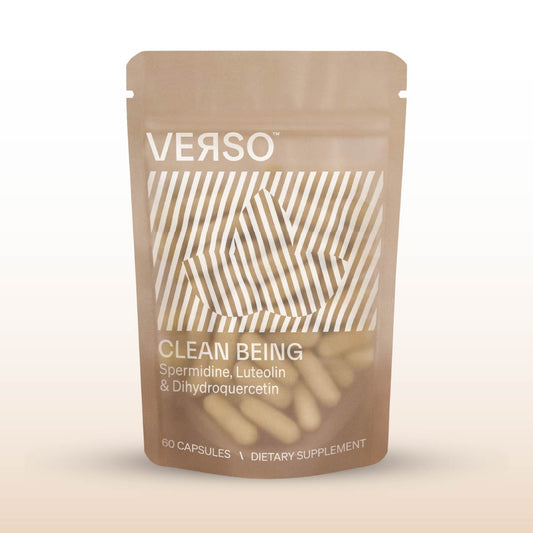These signaling proteins are dependent on NAD+ and play a part in cellular processes like aging, transcription, apoptosis, inflammation, and stress resistance.
Sirtuins are often referred to as longevity genes because of their role in healthspan and lifespan across a variety of organisms. After hundreds of studies, it is indisputable that these genes control healthspan and susceptibility to diseases across multiple organisms, including humans.
There are 7 types of sirtuins in mammals, ranging from SIRT1-SIRT7 and they regulate metabolism transcription of genes, which include releasing insulin, increasing stress resistance as a response to hormetic effects, and modulating lifespan through processes like autophagy.
Rodents also have 7 sirtuins; yeast have 5; bacteria have 1. This article will dive deep into an introduction to sirtuins and scientific discoveries that have helped with breakthroughs in the science of aging.
Sirtuins and NAD+
Essentially sirtuins tell cells in the body what their role is. They navigate the function of all sorts of cells from skin cells, nerve cells, organ cells, etc. and direct them to do their job.
As we age, we deplete levels of a very important molecule called NAD+. Sirtuins need NAD+ to work and when levels are depleted, there isn’t enough NAD+ to direct every cell in the body to do what they’re supposed to. This is why symptoms of aging happen, such as wrinkles, liver dysfunction, longer recovery time from exercise and so on.
On the cellular level, nerve cells start acting like skin cells, and skin cells start acting like kidney cells. The sirtuins aren’t able to guide these cells and the body gets confused. Raising NAD+ levels will allow sirtuins to be able to guide cells back to where they came from and maintain their identity.
Therapeutically, one can think in terms of activating sirtuins for health in two ways:
- NAD+ Replenishment – by increasing NAD+ levels, one is able to activate all the sirtuins (SIRT1-SIRT7);
- Other Small Molecules – there are naturally occurring plant molecules such as resveratrol and pterostilbene that can activate SIRT1 through epigenetic mechanisms.
Sirtuins need NAD+ to work. They don’t protect the body if there aren’t sufficient levels of NAD+. Unfortunately, NAD+ levels are depleted with age. It’s been shown across multiple systems, roundworms, mice, and even humans that a reduction in NAD+ levels is enough to deactivate SIRT1. However, you can replenish NAD+ levels by taking NAD+ precursors. By taking these NAD+ precursors, you are tricking the body to think it’s undergoing hormesis, therefore activating its natural defence mechanisms, sirtuins.
Click here for an overview of NAD+
Discovering SIRT2 and SIRT2 Homologues
The first sirtuin discovered was SIRT2 in the 1970s by Dr. Amar Klar and he identified it to be a gene that controlled mating in yeast. A study in 1995 discovered that SIRT2 was a longevity gene in budding yeast. It was a survival angiotensin-converting enzyme (ACE) in mother cells.
The significance of SIRT2 in this study was when the gene was removed, lifespan was shortened; when the gene was overexpressed, the lifespan increased. In subsequent years, studies were further conducted in other systems such as roundworms, flies, and rodents.
The same results were concluded with SIRT2, and the other SIRT2 homologues (the remaining 6 sirtuins) – sirtuins have a broad effect to slow down aging and extend lifespan.
First Scientific Breakthroughs of Sirtuins
The history of SIRT2 comes from something called silencing in yeast. Mike Grunstein in UCLA was one of the key players who identified the importance of histones in silencing.
The specific importance being the amino terminal tails of histones H3 and H4 have lysines that tend to be acetylated on the epsilon amino group for active chromatin and are deacetylated when the chromatin is silenced. SIRT2 is somehow known to be involved in this silencing process.
This suggested right away that SIRT2 could be a protein or histone deacetylase, but many attempts to show that in multiple labs failed.
Biochemistry of SIRT2
Leonard Guarente’s lab out of MIT started working on the biochemistry of SIRT2 and purified the yeast SIRT2 protein and the mammalian ortholog of SIRT2. They then came upon NAD+ dependent deacetylation of targets.
This means is that without the NAD+ cofactor, SIRT2 and sirtuins in general, are inactive and NAD+ is actually a co-substrate and is split in every reaction cycle concomitant with deacetylation of substrates for sirtuins. Those substrates can be histones and in yeast, the histones are certainly critical substrates of SIRT2.
In mammalian cells, in addition to histones, substrates include other proteins in other multiple cellular compartments that can be deacetylated and that are important physiologically.
This finding provides a link between protein acetylation, metabolism, and epigenetics. It also had implications for aging because it gives a possible explanation for how a calorie restricted diet extends lifespan and slows down aging by activating sirtuins.
With respect to acetylation, the third and final class of enzymes was shown to influence the protein acetylation levels in cells. The first was the histone acetyltransferases identified by Dr. David Allis; second was the HDAC proteins which are deacetylases identified by Dr. Schreiber and colleagues, and these have no cofactor requirement; third are the NAD+ dependent deacetylases or sirtuins.
Where Are The 7 Sirtuins Located in Mammals?
In mammals there are 7 homologues of the yeast SIRT2, with the most important being SIR1. SIRT1, SIRT 6 AND SIRT 7 are nuclear proteins. SIRT1 tends to be in the nucleus deacetylating many targets off of the chromatin and SIRT6 and SIRT7 tend to be more closely associated with the chromatin, suggesting that histons might be particularly important substrates for them.
SIRT 3, SIRT4, and SIRT5 are encoded in the nucleus, but target mitochondria, so three of the seven sirtuins reside in the mitochondria. Finally, SIRT2 is cytosolic, so it is located in the cytoplasm, but can also function in the nucleus.
Are Sirtuins Redundant?
No, they are not since they reside in different cellular compartments. One way to view this is to look at sirtuins and to see which proteins they deacetylate. Many tissues have substrates for sirtuin proteins. For example PCG1-alpha is a protein that is deacetylated by SIRT1. When PCG1-alpha is deacetylated, it can drive mitochondrial biogenesis and mitochondrial function.
In fact, if you go through each of the sirtuins and which proteins they deacetylate, one of the themes that emerges is that what sirtuins do in a coordinated fashion – they drive oxidative metabolism in mitochondria. They force the cell to produce ATP via electron transport in mitochondria.
Naturally following with that is they drive stress resistance to reactive oxygen species such as enzymes like superoxide dismutase are upregulated by particularly SIRT3 in mitochondria.
They also drive pathways that would be consistent with oxidative metabolism such as oxidation of fatty acids inside of mitochondria. Note that oxidative metabolism would be particularly important in the conditions when the fuel source is limiting because of the efficiency with which ATP is produced by mitochondrial metabolism.
Sirtuins and Calorie Restriction
The theory that sirtuins are necessary to reap the benefits of calorie restriction has been clinically tested multiple times over. When mice were genetically designed without a certain sirtuin, such as SIRT3, they did not realize the same oxidative metabolism benefits that other CR mice with SIRT3.
A particular study showed that mice that were calorie restricted were protected from hearing loss, but mice at the same age without the SIRT3 gene, were not protected and were subject to hearing loss.
Calorie restriction slows down the ravaging of aging in many ways. Oxidative metabolism, especially under conditions of limiting fuel source. One reason that might slow aging, is beefing up resistance to oxidative stress and oxidative damage to cells.
Sirtuins and Age-Related Diseases
In rodent models, multiple sirtuins have been shown to be protective against a series of diseases such as:
Cancer – SIRT1, SIRT3, SIRT4, SIRT6 are lost in about 20-40% of human tumors. This means that they are tumor suppressors. They repress cancer by one of the major mechanisms relating to cancer metabolism and particularly to the propensity of cancer cells to want to favor glycolysis, which is the Warburg effect, but also glutamine utilization. This connection to the sirtuins is that SIRT6 represses glycolysis and also ribosomal biogenesis – 2 pathways that cancer cells need in order to grow.
Diabetes – SIRT1
Neurodegenerative (AD, HD, PD) ( SIRT1)
CVD (endothelial cell function)(SIRT1)
Osteoporosis (SIRT1)
Kidney Disease (SIRT1)
Inflammation (SIRT1)
Sirtuins and Metabolism
In the mitochondria, SIRT4 suppresses glutamate dehydrogenase, an enzyme for glutamate utilization, and thus represses glutamine metabolism. SIRT3 represses several enzymes by deacetylation that are involved in reactive oxygen species (ROS) production, so SIRT3 represses production of ROS. When any of these three proteins are lost, the cells metabolism is more geared towards tumor metabolism, favouring cancer. On top of that, SIRT1 and SIRT6 are intimately involved in DNA repair.
That includes both single strand break repair and double strand break repair. It includes repair of telomeres, non-homologous end joining, and homologous recombination. Again, removal of one of these two sirtuins would create higher DNA damage, which could favor a tumorigenic phenotype.
Conclusion
Sirtuins are part of a regulatory network within all living organisms including yeast, roundworms, flies, and humans. They control the organisms health in times of adversity, which is usually referenced as hormesis.
For example, if yeast cells undergo hormesis, the sirtuin enzymes turn on and protect the cells, allowing them to live longer. Hormetic factors include, but are not limited to fasting, caloric restriction, and exercise. An important thing to note is that if an organism does not have sirtuins, these stressors, such as fasting, won’t work effectively, or won’t work at all – there will be no benefit from hormesis.
Understanding how sirtuins work is critical to understanding how to intervene lifestyle factors to achieve optimal healthspan and lifespan.
Sirtuin activity is high when you wake up fasted. Conversely, if you eat a standard American meal, you can turn off these longevity genes. Your diet controls these pathways and the Western diet limits lifespan because of this. We need to bring these genes up, at least to a natural state and hyperactivate them to make us healthier than we could ever be. Sirtuins are slowing down aging and we don’t need to know the causes of aging in order to slow it down. We just need to target sirtuins to allow them to do the work to regulate our bodies.
Sirtuins have been around for billions of years, taking care of the first living organisms on this planet including insects, plants, and humans. The molecules that plants make, such as resveratrol, pterostilbene, nicotinamide mononucleotide, and nicotine riboside can benefit us when we ingest them by activating our natural defence mechanisms.
We’re living in a great time, as we have access to these molecules through supplements. We don’t have to be calorie restricted to activate our longevity pathways. We can simply trick the body by thinking it is calorie restricted by taking these molecules and reap the anti-aging benefits.
Cautionary note: these molecules (resveratrol, pterostilbene, nicotinamide mononucleotide, nicotinamide riboside) are not stable molecules – they will degrade and convert into other molecules if they aren’t stored properly. The converted molecules will inhibit longevity pathways – do the opposite of what they should be doing in their uncompromised forms.
Click here for a guide on how to choose high quality, pure supplements.
Click here for an overview on resveratrol
Click here for an overview on nicotinamide mononucleotide.





